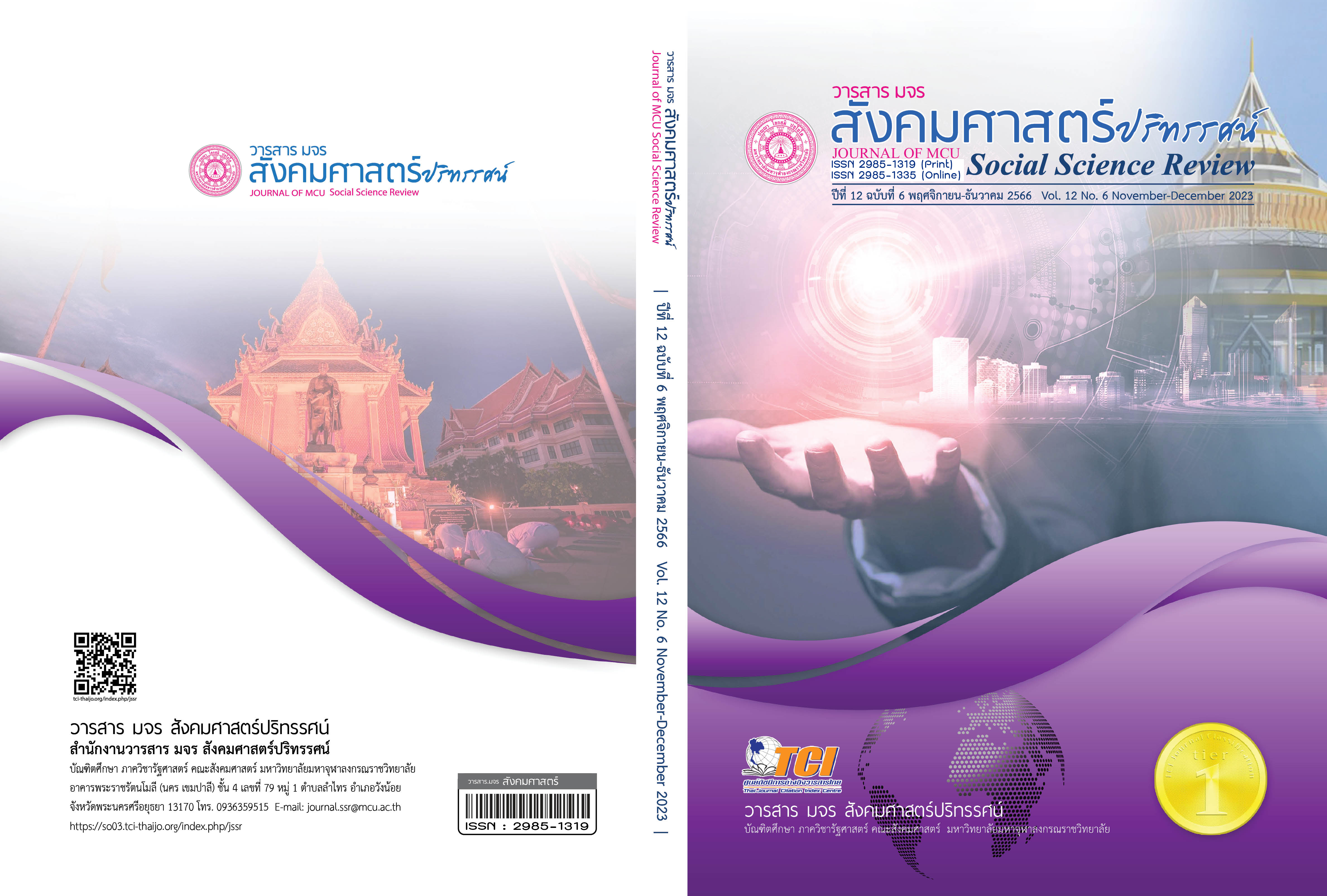การวัดสมรรถนะทางคณิตศาสตร์ของนักเรียนชั้นประถมศึกษาตอนปลาย
คำสำคัญ:
สึเค่ง, สมรรถนะทางคณิตศาสตร์, นักเรียนชั้นประถมศึกษาตอนปลายบทคัดย่อ
บทความวิจัยนี้มีวัตถุประสงค์เพื่อวัดระดับสมรรถนะทางคณิตศาสตร์ของนักเรียนระดับชั้นประถมศึกษาตอนปลายจากโรงเรียนแห่งหนึ่งในจังหวัดขอนแก่น จำนวน 21 คน ซึ่งเก็บรวมรวมข้อมูลในภาคเรียนที่ 2 ปีการศึกษา 2563 โดยใช้ระเบียบวิธีวิจัยเชิงปริมาณและเชิงคุณภาพ เครื่องมือที่ใช้ในการเก็บรวบรวมข้อมูลประกอบด้วย แบบทดสอบเพื่อวัดสมรรถนะทางคณิตศาสตร์ ระดับ 10 ถึงระดับ 6 กระดาษคำตอบ และอุปกรณ์ประกอบการสอบของแต่ละระดับ ที่ได้รับการรับรองโดยสถาบันรับรองสมรรถนะทางคณิตศาสตร์แห่งประเทศไทย ข้อมูลที่นำมาวิเคราะห์ประกอบด้วย ผลคะแนนจากแบบทดสอบของนักเรียนกลุ่มเป้าหมาย ผลการวิเคราะห์คะแนนของผู้เข้าสอบทั้งประเทศ และแนวคิดของนักเรียนจากกระดาษคำถามและกระดาษคำตอบ โดยใช้กรอบการวิเคราะห์ข้อมูลคือ กรอบเนื้อหาและกรอบความสามารถโดยรวมของแบบทดสอบวัดสมรรถนะทางคณิตศาสตร์ ระดับ 10 ถึง ระดับ 6
ผลการวิจัยพบว่า ในการวัดระดับความสามารถทางคณิตศาสตร์ของนักเรียนโดยวิเคราะห์จากผลคะแนน ทั้งหมด 5 ระดับ พบว่า นักเรียนมีระดับสมรรถนะทางคณิตศาสตร์ในระดับ 10 จำนวน 6 คน คิดเป็น 28.57% ของนักเรียนกลุ่มเป้าหมาย ระดับ 9 จำนวน 11 คน คิดเป็น 52.38% ของนักเรียนกลุ่มเป้าหมาย ระดับ 8 จำนวน 3 คน คิดเป็น 14.29% ของนักเรียนกลุ่มเป้าหมาย และระดับ 7 จำนวน 1 คน คิดเป็น 4.76% ของนักเรียนกลุ่มเป้าหมาย นอกจากนั้นในแต่ละระดับยังสะท้อนให้เห็นว่านักเรียนมีสมรรถนะทางคณิตศาสตร์ในด้านต่าง ๆ ตามกรอบเนื้อหาข้อสอบและแสดงถึงความสามารถโดยรวม
เอกสารอ้างอิง
กระทรวงศึกษาธิการ. (2547). พระราชบัญญัติการศึกษาภาคบังคับ พ.ศ. 2545. แนวทางการดำเนินงานตามพระราชบัญญัติการศึกษาภาคบังคับ พ.ศ. 2545. กรุงเทพฯ: สำนักพิมพ์เสมาธรรม.
_______. (2551). หลักสูตรแกนกลางการศึกษาขั้นพื้นฐาน พุทธศักราช 2551. กรุงเทพฯ: ชุมนุมสหกรณ์การเกษตรแห่งประเทศไทย.
จิตรลดา ใจกล้า. (2557). การประเมินการเรียนรู้ทางคณติศาสตร์ของนักเรียนในโรงเรียนที่นวัตกรรมการศึกษาชั้นเรียนและวิธีการแบบเปิด (วิทยานิพนธ์ศึกษาศาสตรมหาบัณฑิต สาขาวิชาคณิตศาสตรศึกษา). ขอนแก่น: มหาวิทยาลัยขอนแก่น.
นฤมล ช่างศรี. (2549). ความสัมพันธ์ระหว่างความเชื่อทางคณิตศาสตร์ของครูและบทบาทการสอนในชั้นเรียนคณิตศาสตร์ (วิทยานิพนธ์ศึกษาศาสตรมหาบัณฑิต สาขาวิชาคณิตศาสตรศึกษา). ขอนแก่น: มหาวิทยาลัยขอนแก่น.
_______. (2555) ความเชื่อที่ครูตระหนักเกี่ยวกับการปฏิบัติการสอนภายใต้บริบทการพัฒนาวิชาชีพครูโดยใช้การศึกษาชั้นเรียนและวิธีการแบบเปิด (ดุษฎีนิพนธ์ปรัชญาดุษฎีบัณฑิต สาขาวิชาคณิตศาสตรศึกษา). ขอนแก่น: มหาวิทยาลัยขอนแก่น.
ปิยะชัย จันทรวงศ์ไพศาล. (2549). การค้นห้าและวิเคราะห์เจาะลึก Competency ภาคปฏิบัติ (พิมพ์ครั้งที่ 2). กรุงเทพฯ: เอช อาร์ เซ็นเตอร์.
ไมตรี อินทร์ประสิทธิ์. (2557). การสอนโดยใช้วิธีการแบบเปิดในชั้นเรียนคณิตศาสตร์ของญี่ปุ่น. KKU-Journal of Mathematics Education, 1, 1-15.
_______. (2557). กระบวนการแก้ปัญหาในคณิตศาสตร์ระดับโรงเรียน. ขอนแก่น: มหาวิทยาลัยขอนแก่น.
วิจารณ์ พานิช. (2555). วิถีสร้างการเรียนรู้เพื่อศิษย์ ในศตวรรษที่ 21. กรุงเทพฯ: มูลนิธิสดศรีสฤษดิ์วงศ์.
_______. (2555). การเรียนรู้เกิดขึ้นอย่างไร. กรุงเทพฯ: มูลนิธิสยามกัมมาจล.
สถาบันรับรองสมรรถนะทางคณิตศาสตร์แห่งประเทศไทย. (2561). คู่มือการสอบวัดสมรรถนะทางคณิตศาสตร์ SUKEN. ขอนแก่น: มหาวิทยาลัยขอนแก่น.
คณะกรรมการอิสระเพื่อการปฏิรูปการศึกษา. (2561). SUKEN การสอบวัดสมรรถนะทางคณิตศาสตร์ Test Result. ขอนแก่น: มหาวิทยาลัยขอนแก่น.
________. (2562). คู่มือศูนย์สอบวัดสมรรถนะทางคณิตศาสตร์. ขอนแก่น: สํานักพิมพ์มหาวิทยาลัยขอนแก่น.
เสน่ห์ จุ้ยโต. (2549). พจนานุกรมสมรรถนะ (Competency Dictionary). กรุงเทพฯ: บริษัทขนส่ง จำกัด (มหาชน).
จิตรลดา ใจกล้า และคณะ. (2564). การวิเคราะห์สมรรถนะทางคณิตศาสตร์ของนักเรียน. วารสาร มจร สังคมศาสตร์ปริทรรศน์, 10(2), 51-64.
Boyatzis, R. (2007). Competencies in the 21st century. Journal of Management Development, 27(1), 5-12.
NCTM, (2000). Mathematical Communication in the Classroom: A Teacher Makes a Difference. Early Childhood Education Journal, 32(6), 365-369.
Niss, M. (2011). Competencies and Mathematical Learning: Ideas and inspiration for the development of mathematics teaching and learning in Denmark. Roskilde University, Department of Science, Systems and Models, IMFUFA.
Obersteiner, A. (2018). Multiple pathways between affect and mathematical competence in young children commentary on the studies in the Special Issue. Educational Studies in Mathematics, 100(3), 317-323.
Rensaa, R.J., (2011). A Task Based Two-Dimensional View of Mathematical Competency Used to Analyse a Modelling Task. International Journal of Innovation in Science and Mathematics Education, 19(2), 425-435.
Rotherham, A.J. & Willingham, D.T. (2009). 21st Century Skills. Educational Leadership, 67(1), 16–21.
Shimisu, S. (2019). คู่มือการสอบวัดสมรรถนะทางคณิตศาสตร์. ขอนแก่น: สํานักพิมพ์มหาวิทยาลัยขอนแก่น.
ดาวน์โหลด
เผยแพร่แล้ว
รูปแบบการอ้างอิง
ฉบับ
ประเภทบทความ
สัญญาอนุญาต
ลิขสิทธิ์ (c) 2023 วารสาร มจร สังคมศาสตร์ปริทรรศน์

อนุญาตภายใต้เงื่อนไข Creative Commons Attribution-NonCommercial-NoDerivatives 4.0 International License.
เพื่อให้เป็นไปตามกฎหมายลิขสิทธิ์ ผู้นิพนธ์ทุกท่านต้องลงลายมือชื่อในแบบฟอร์มใบมอบลิขสิทธิ์บทความให้แก่วารสารฯ พร้อมกับบทความต้นฉบับที่ได้แก้ไขครั้งสุดท้าย นอกจากนี้ ผู้นิพนธ์ทุกท่านต้องยืนยันว่าบทความต้นฉบับที่ส่งมาตีพิมพ์นั้น ได้ส่งมาตีพิมพ์เฉพาะในวารสาร มจร สังคมศาสตร์ปริทรรศน์ เพียงแห่งเดียวเท่านั้น หากมีการใช้ภาพหรือตารางหรือเนื้อหาอื่นๆ ของผู้นิพนธ์อื่นที่ปรากฏในสิ่งตีพิมพ์อื่นมาแล้ว ผู้นิพนธ์ต้องขออนุญาตเจ้าของลิขสิทธิ์ก่อน พร้อมทั้งแสดงหนังสือที่ได้รับการยินยอมต่อบรรณาธิการ ก่อนที่บทความจะได้รับการตีพิมพ์ หากไม่เป็นไปตามข้อกำหนดเบื้องต้น ทางวารสารจะถอดบทความของท่านออกโดยไม่มีข้อยกเว้นใดๆ ทั้งสิ้น





